Denim is a wonderful base for embroidery being soft and welcoming to the needle, yet sturdy enough to make it easy to keep the thread at a good tension, so you can do away with both embroidery hoop and stabilising underlay. Bliss. On dark denim, however, it is almost impossible to see any pencil line (or any of the other commercially available transfer pencils – I have tried) so I gave up trying to sketch out a design and just let the needle take me instead. With a rough sketch of my design to hand, this wasn’t difficult and, in the end, rather liberating.
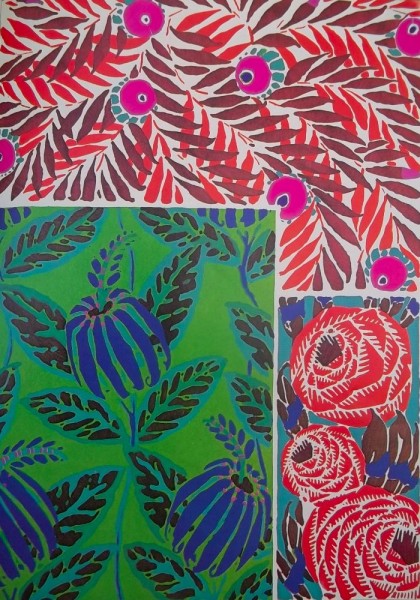
Floral design by E.A.Séguy (Plate 30 from ‘Exotic Floral Patterns in Colour’ by E.A.Séguy, Dover c 1974)
My design for the shirt yoke was a combination of two of the above designs. I used 4 strands of DMC embroidery cotton (and occasionally even 6) to make the embroidery chunky and crude and this was a salve to the eyes and concentration after spending the dark winter evenings devoted to sewing with 2 strands on fine linen or silk. Final lines of running stitch stabilised the yoke to the fabric beneath and the flow of these lines gave the design a unifying rhythm.
E.A.Séguy is a wonderful artist whose best known work was done in the Art Nouveau and Art Deco styles. I’ve had books of his floral designs for many years and have been recently been drooling over a republication of his insect prints although I am ashamed to admit that I’ve only just realised that the latter illustrations were by the same hand as the former. But, try to find out more about the designer and – for a man who only died in the 1980s- much is unclear and even contradictory. The Publisher’s Note at the front of my own Dover publication of 1974 (Exotic Floral Patterns in Color by E.A.Seguy) states,
“No personal information about the artist is available, not even his dates, his Christian name or the correct form of the surname (in half of his publications it appears as Séguy, and both the accented and the unaccented forms of the name are possible).”
Trawling around the internet trying to find not just a single juicy titbit but a catch worthy of mention, I nearly gave up. Fortunately salvation was at hand in the surprising form of the online Ralph Lauren Magazine which quotes at length from the introduction to the newly republished book’s of Séguy’s insects (and it is obvious that the blurb writer on the publisher’s website hasn’t bothered to open the book and read it themselves). The introduction is written by Leslie K. Overstreet who, comfortingly, is the curator of natural-history rare books at the Smithsonian Institution Libraries – at last an authority that looks worth deferring to.
Overstreet confirms that the identity of E.A.Seguy is a mystery to this day. But he tries to suggest a possible answer. The name is variously rendered as Emile-Allain Seguy or Eugène Séguy, which suggests there may not be just one person but two. Eugène is known to have been a French entomologist (c.1890-1985) who had connections – indeed he was a professor – with the Muséum nationale d’histoire naturelle in Paris from 1919 onwards and he is credited with producing scientific illustrations of his speciality – diptera (flies) – which are signed E.Séguy. However, the earliest of the artist’s (as opposed to the entomologist’s) known work is dated 1902 which would mean that – if the entomologist did them – he would have only been about 12 years old. Thus Overstreet suggests, “It is possible that the artist was a relation-father, brother, cousin – or even a sister, demurely hiding her gender.” An interesting thought. It is certainly the case that artist’s last known work ‘Prismes’ (Prisms), which was inspired by crystalline forms found in nature, was published in Paris in 1930. After that, nothing, and yet the entomologist lived on for another 50 years, dying in the 1980s. It is also worth noting that although the illustrator depicted the glory of natural forms with scientific precision, his work exhibited an artistic verve and a decorative and pattern-making potential which went beyond the the remit of the botanical illustrator for whom almost pedantic accuracy with reference to classificatory description must always come first.
Designs in the early pattern books were gloriously Art Nouveau to the point of being defining. Lines were graceful and lyrical, colours were clear and bright and naturalistic forms were identifiable. During the 1920s his style evolved into the harsher, brasher and brittler aesthetic of Art Deco. For these patterns he used the pochoir technique which lent itself well to geometric designs and vibrant colour combinations. This technique, in which a photogravure image was overlaid by a series of intricately cut stencils each of which was then coloured in by hand, was labour intensive, expensive, absolutely up to the minute, and greatly demanded by the fashion magazines. A very distinctive look resulted.
For me the Art Nouveau flowers are unsurpassably inspirational, though the butterflies suggest exciting possibilities for appliqued wall hangings, larger than life and riotously coloured, distractingly vibrant and slightly alarming. It won’t be difficult to return to Séguy’s work again.

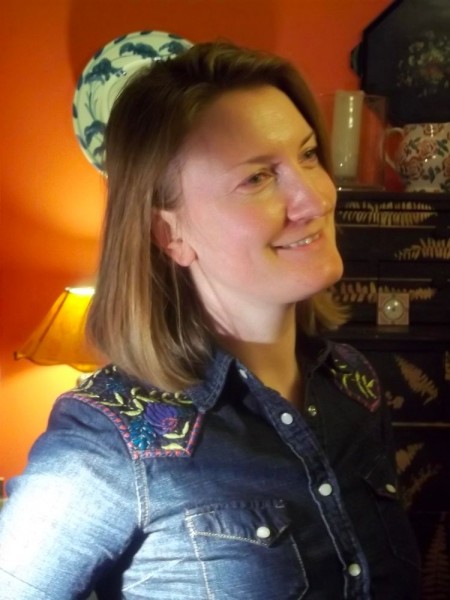
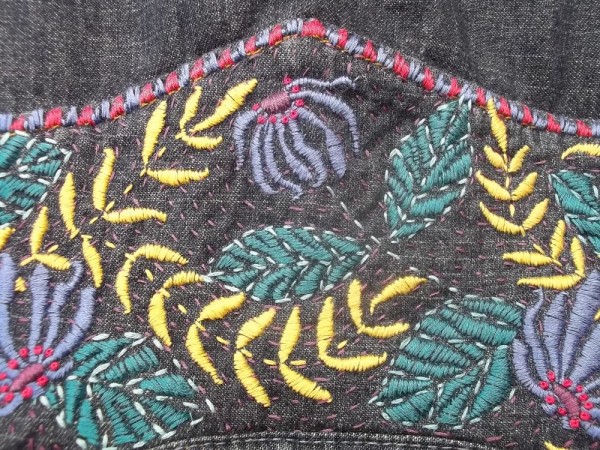
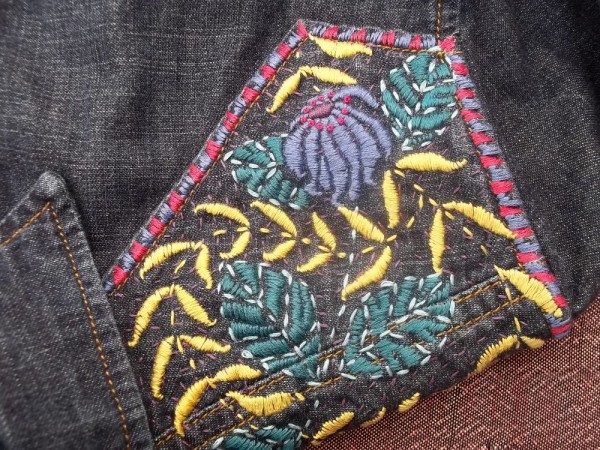
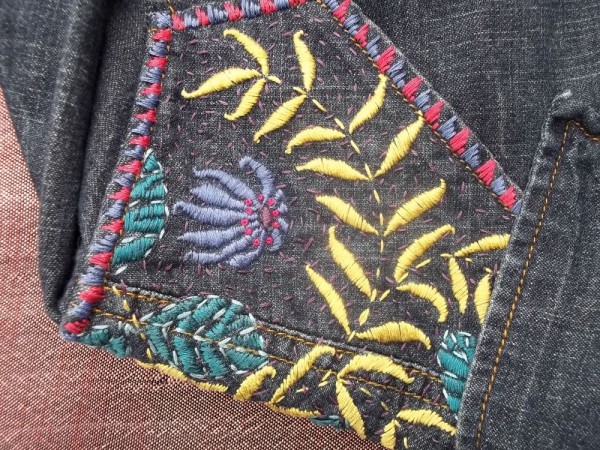
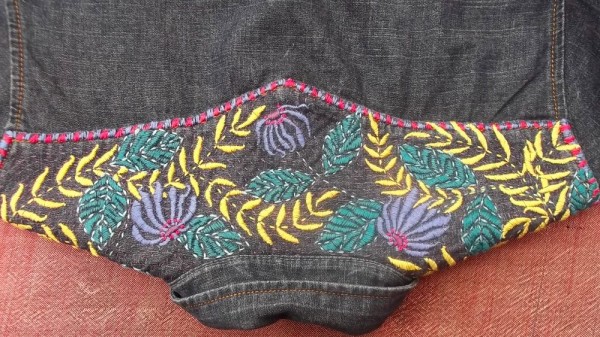
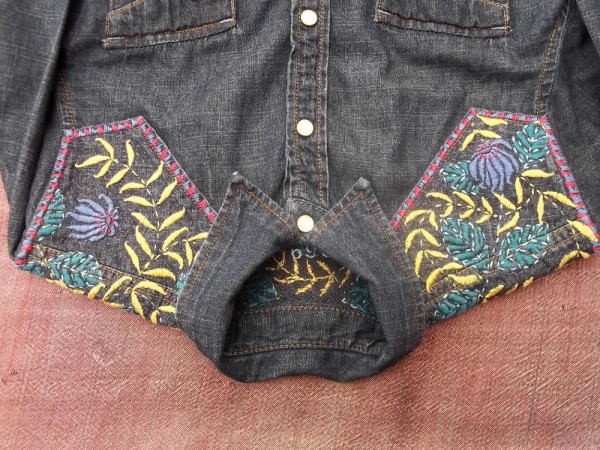
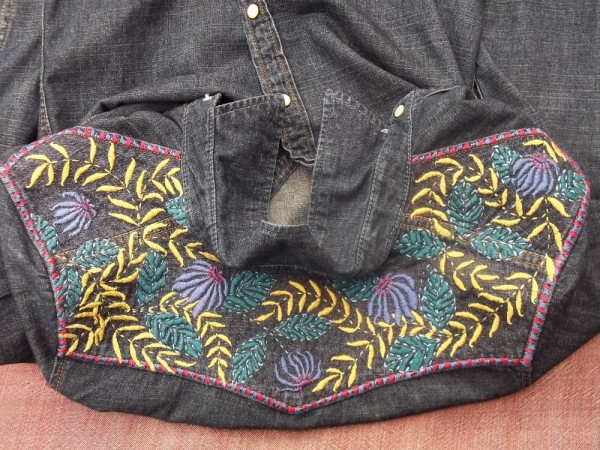
4 Comments
Hello,
your article is very interesting. Could you give me the references of the article of the Ralph lauren Magazine? I shall need it.
Sorry for my bad english, I’m french…
Best regards.
Mathilde, I can no longer find the article in the Ralph Lauren online magazine, but it was taken from the introduction to this book by Leslie K. Overstreet http://www.amazon.com/Botanicals-Butterflies-Leslie-K-Overstreet/dp/275940269X/ref=pd_sim_b_4?ie=UTF8&refRID=034GCST9H9N1452GPT4P. I hope this is helpful.
Eugene and Emile were two different guys. Or should I say… two different Seguys. (Bad joke.)
Anyway, check this out:
http://designobserver.com/feature/insect-men/38887
Eugene was the bug man. Emile was the artist… who liked to make pictures of bugs. No wonder we’re all confused.
Your embroidery is beautiful!
Thanks Steve for your comment and the article – really interesting and glad to get things clear.